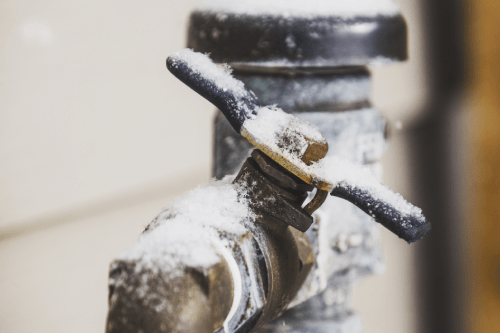Avoiding Frozen Plumbing in Cold Weather: Pro Advice
Avoiding Frozen Plumbing in Cold Weather: Pro Advice
Blog Article
Listed here down the page you can find additional good quality resources involving How to prepare your home plumbing for winter weather.

Winter can wreak havoc on your plumbing, specifically by freezing pipes. Here's exactly how to prevent it from happening and what to do if it does.
Intro
As temperature levels drop, the danger of frozen pipelines rises, possibly leading to pricey fixings and water damage. Recognizing just how to avoid frozen pipelines is critical for property owners in cold climates.
Recognizing Icy Pipelines
What creates pipes to freeze?
Pipelines freeze when subjected to temperature levels below 32 ° F (0 ° C) for prolonged periods. As water inside the pipes ices up, it expands, taxing the pipe wall surfaces and potentially triggering them to rupture.
Dangers and problems
Frozen pipelines can result in supply of water disturbances, property damages, and expensive repair services. Ruptured pipelines can flood homes and create considerable structural damages.
Indicators of Frozen Piping
Determining frozen pipes early can stop them from rupturing.
Just how to identify icy pipelines
Look for lowered water flow from taps, unusual smells or noises from pipelines, and visible frost on exposed pipelines.
Avoidance Tips
Shielding susceptible pipelines
Wrap pipes in insulation sleeves or make use of warmth tape to shield them from freezing temperature levels. Focus on pipes in unheated or outside areas of the home.
Heating methods
Keep interior spaces effectively heated up, especially locations with plumbing. Open cabinet doors to permit cozy air to circulate around pipes under sinks.
Shielding Outdoor Pipes
Garden hoses and outside faucets
Disconnect and drain garden hose pipes before winter. Install frost-proof faucets or cover outdoor faucets with shielded caps.
What to Do If Your Pipes Freeze
Immediate actions to take
If you suspect frozen pipes, keep taps open up to alleviate pressure as the ice thaws. Make use of a hairdryer or towels soaked in warm water to thaw pipelines gradually.
Long-Term Solutions
Structural modifications
Think about rerouting pipelines far from exterior wall surfaces or unheated areas. Include additional insulation to attics, cellars, and crawl spaces.
Upgrading insulation
Buy top notch insulation for pipelines, attic rooms, and wall surfaces. Correct insulation aids keep regular temperature levels and minimizes the threat of frozen pipes.
Conclusion
Avoiding icy pipelines needs positive procedures and fast responses. By understanding the reasons, signs, and preventive measures, house owners can protect their plumbing throughout winter.
5 Ways to Prevent Frozen Pipes
Drain Outdoor Faucets and Disconnect Hoses
First, close the shut-off valve that controls the flow of water in the pipe to your outdoor faucet. Then, head outside to disconnect and drain your hose and open the outdoor faucet to allow the water to completely drain out of the line. Turn off the faucet when done. Finally, head back to the shut-off valve and drain the remaining water inside the pipe into a bucket or container. Additionally, if you have a home irrigation system, you should consider hiring an expert to clear the system of water each year.
Insulate Pipes
One of the best and most cost-effective methods for preventing frozen water pipes is to wrap your pipes with insulation. This is especially important for areas in your home that aren’t exposed to heat, such as an attic. We suggest using foam sleeves, which can typically be found at your local hardware store.
Keep Heat Running at 65
Your pipes are located inside your walls, and the temperature there is much colder than the rest of the house. To prevent your pipes from freezing, The Insurance Information Institute suggests that you keep your home heated to at least 65 degrees, even when traveling. You may want to invest in smart devices that can keep an eye on the temperature in your home while you’re away.
Leave Water Dripping
Moving water — even a small trickle — can prevent ice from forming inside your pipes. When freezing temps are imminent, start a drip of water from all faucets that serve exposed pipes. Leaving a few faucets running will also help relieve pressure inside the pipes and help prevent a rupture if the water inside freezes.
Open Cupboard Doors
Warm your kitchen and bathroom pipes by opening cupboards and vanities. You should also leave your interior doors ajar to help warm air circulate evenly throughout your home.

As a reader on How to Prevent Your Pipes From Freezing, I imagined sharing that article post was a smart idea. So long as you enjoyed our article kindly do not forget to share it. Thanks a lot for your time. Return soon.
Visit Homepage Report this page